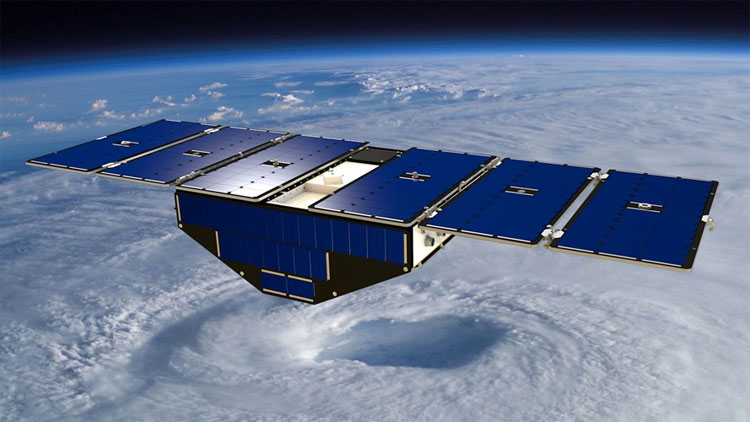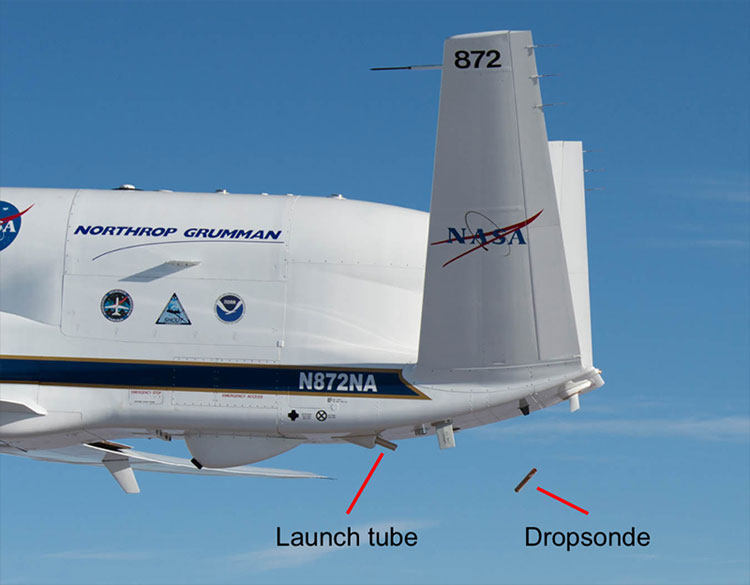Tools used to measure tropical storm strength
To measure storm intensity, meteorological agencies need specialized tools such as satellites, radars, buoys or reconnaissance aircraft.
The period from August to September each year is the peak of tropical storms in the North Atlantic and North Pacific. In order to collect storm-related data, meteorologists need many specialized equipment. Below are the tools commonly used by reputable meteorological agencies around the world to measure storm intensity, according to Sciencing.
Artificial satellite

NASA weather satellite.(Photo: Inverse).
In 1973, American meteorologist Vernon Dvorak developed a method of estimating storm intensity by comparing satellite imagery to the physical characteristics of a storm. This method has become the basis for storm forecasting models in the world.
Today, meteorological satellites play an indispensable role in monitoring and measuring tropical storm strength. The satellites are equipped with infrared cameras and sensors to help experts collect storm data from space such as range, cloud structure or temperature difference during storms.
Scout planes and free-fall detectors

The reconnaissance plane dropped a free-fall detector into the storm.(Photo: NASA).
Reconnaissance aircraft are used to visually measure wind speed, atmospheric pressure, and ocean surface inspection. They usually move at an altitude of about 3,000 meters and calculate the wind speed at 10 meters above sea level by free-fall detectors (dropsonde).
The mounted detector will be released into the storm from the aircraft. During the fall process, the device can measure wind speed, wind direction, storm height, temperature and air pressure . thanks to a sensor system and GPS receiver.
Radar and buoy
Radar and buoy are useful means to track storms from below. Weather radar on land will work when the storm is a few hundred kilometers from the coast, with the ability to measure wind speed, storm velocity, temperature and atmospheric pressure.
Meanwhile, buoys are often the last artificial structures to operate in stormy seas. They are fitted with weather meters, which can collect data regarding wind speed, wind direction, air pressure and water temperature.
Storm scale

Saffir-Simpson hurricane scale.(Photo: WeatherOps).
Saffir-Simpson hurricane scale is the most commonly used hurricane classification scale in the world. Accordingly, tropical storms are classified into 5 levels according to wind intensity.
Vietnam currently uses the Beaufort Wind Scale to classify storms . This scale initially had 13 levels (from 0 to 12) and was expanded into 18 levels (from 0 to 17) in 1946.
- How strong is a storm?
- The destructive power of the storm
- When is it called super typhoon?
- You can know the height and strength of a person by hearing them scream
- Tropical depression intensified into storm No. 2
- Tropical depressions intensified into storm No. 10
- Tropical depression intensified into storm No. 3 - WIPHA storm
- Strong tropical depression into storm No. 1, approaching the Vietnamese mainland
- This afternoon, the tropical depression strengthened into a storm - the number 9 storm this year
- Tropical depression intensified into storm No. 3
- Tropical depression strengthened into storm No. 2, heading to Quang Ninh - Hai Phong
- Hurricane Pakhar and tropical depression are
 'Fine laughs' - Scary and painful torture in ancient times
'Fine laughs' - Scary and painful torture in ancient times The sequence of numbers 142857 of the Egyptian pyramids is known as the strangest number in the world - Why?
The sequence of numbers 142857 of the Egyptian pyramids is known as the strangest number in the world - Why? History of the iron
History of the iron What is alum?
What is alum?